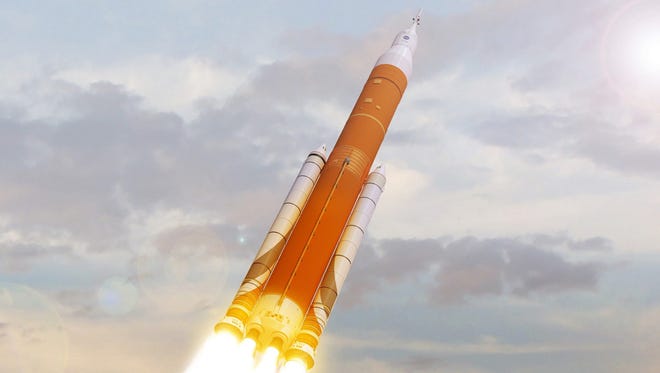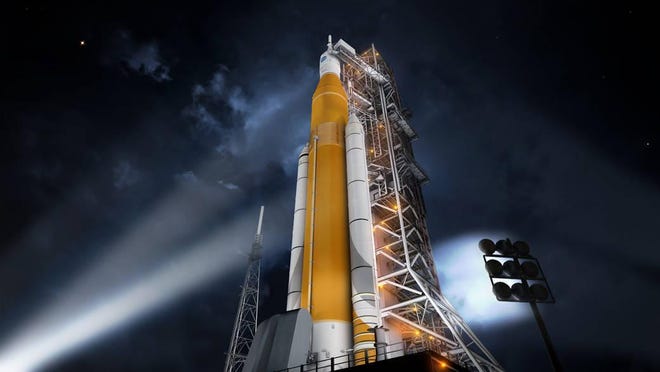NASA urged to be cautious about flying crew on first space launch rocket

CAPE CANAVERAL — NASA needs a “compelling” reason for risking astronauts’ lives on the first launch of a new exploration rocket from Kennedy Space Center, if a study determines such a mission is feasible, a panel of independent safety advisers said Thursday at the space center.
“We strongly advise that NASA carefully and cautiously weigh the value proposition for flying crew on EM-1,” said Patricia Sanders, chair of NASA’s Aerospace Safety Advisory Panel, referring to the test flight called Exploration Mission-1.
NASA last week announced it will study the costs and risks of flying astronauts in an Orion capsule launching atop the first flight of the 322-foot Space Launch System rocket, or SLS, from launch pad 39B.
► Related:SpaceX cargo ship arrives safely at space station
Current plans call for a test launch without a crew in late 2018, followed by a flight with a crew on the second Space Launch System mission, EM-2, at least three years later.
However, delays could push those dates back so much that a crew launch might not occur until late in the next presidential term.
The Trump administration apparently expressed interest in accelerating the timeline for a deep space mission, if possible. The study will evaluate the cost, time and risk involved in flying a crew sooner.

As it stands, the Orion slated to launch on the first test flight will not be equipped with life support systems, and will be flying a different heat shield than was flown on the capsule's first test flight in 2014, to name just two technical concerns.
“Several changes would require added complexity, unknowns, and almost certainly risk, not to mention cost, schedule and potential opportunity cost implications,” Sanders said.
After discussions with NASA leadership, Sanders said “the panel has confidence in the approach that NASA is taking for this assessment,” and was not pre-judging its outcome.
► Related:SpaceX cargo ship scrapped docking at space station
However she said the safely panel, created in the aftermath of the 1967 fire that killed three Apollo 1 astronauts, felt “compelled to provide a note of advice and caution” about the potential changes to an “already fairly aggressive test program of record.”
“NASA should provide a compelling rationale in terms of benefits gained in return for accepting additional risk, and fully and transparently acknowledge the tradeoffs being made,” Sanders said. “If the benefits warrant assumption of additional risk, we expect NASA to clearly and openly articulate their decision process and rationale.”
The panel’s members include retired Air Force Lt. Gen. Susan Helms, a former NASA astronaut. Another former astronaut, Ken Bowersox, attended the meeting as a representative for another group of external advisers, the NASA Advisory Council.
Follow James Dean on Twitter: @flatoday_jdean
► Related: NASA to study flying crew on first flight of big rocket